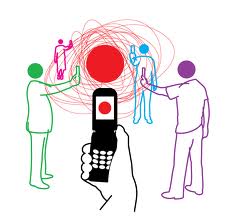“When major events occur, the public can offer us as much new information as we are able to broadcast to them. From now on, news coverage is a partnership” (Richard Sambrook, BBC)
Citizen Journalism is an extremely controversial term. Journalists defend their right in that you are trained to be a journalist and that it is a professional discipline. Others beleive that you can just snap a picture of something and share it with the world and beleive that is journalism.
Technological advances have greatly benefitted to the increase in citizen journalism. Having cameras on cell phones, ipads, ipods, etc allow us to record or capture something at any moment and relay that information on any social media website or just the general Internet in seconds. Information travels so fast these days, it is hard to constantly always have the right information and to be fully informed on what is going on. But with just short videos or pictures of events or people, society is able to know about a story in a very short context, versus reading an entire article.
Citizen journalism is participatory and has changed the entire dynamic of news reports and the relationship between broadcasters and audiences. Now, an ordinary person has the opportunity to make news just by the click of a camera or pressing the record button. It truly is incredible and will change society forever.
Once a journalist, always a journalist.



 Over the past 50 years, there have been several transitions in the way we use technology. Before the information society we are currently living in, people mainly depended exclusively on the media for information regarding news about people around us and the rest of the world. We have seen quite a transformation, as there has been a move toward everybody not just being receivers, but messengers too. The objective of getting news around the world has stayed the same, but there are just new ways to get there.
Over the past 50 years, there have been several transitions in the way we use technology. Before the information society we are currently living in, people mainly depended exclusively on the media for information regarding news about people around us and the rest of the world. We have seen quite a transformation, as there has been a move toward everybody not just being receivers, but messengers too. The objective of getting news around the world has stayed the same, but there are just new ways to get there.